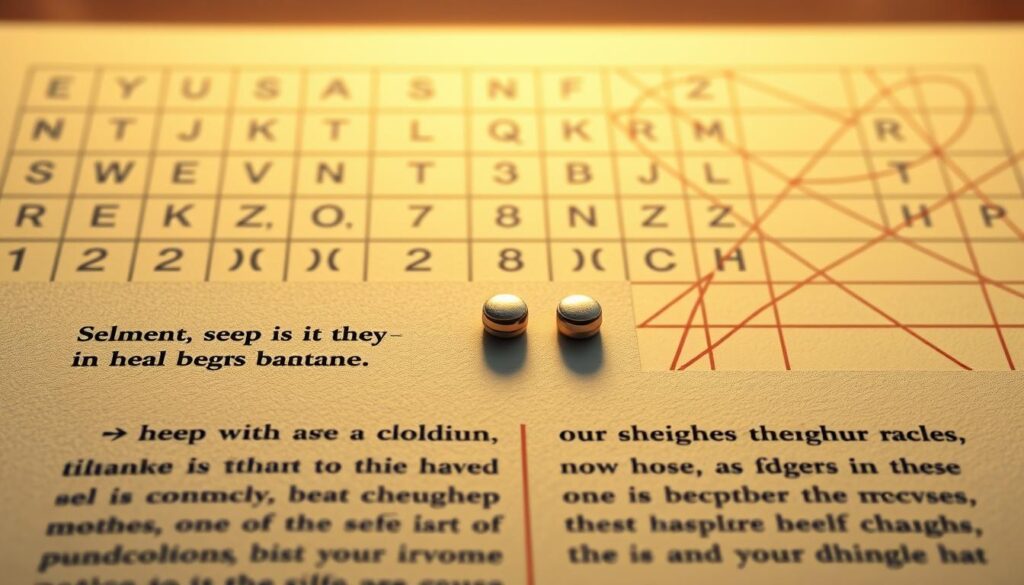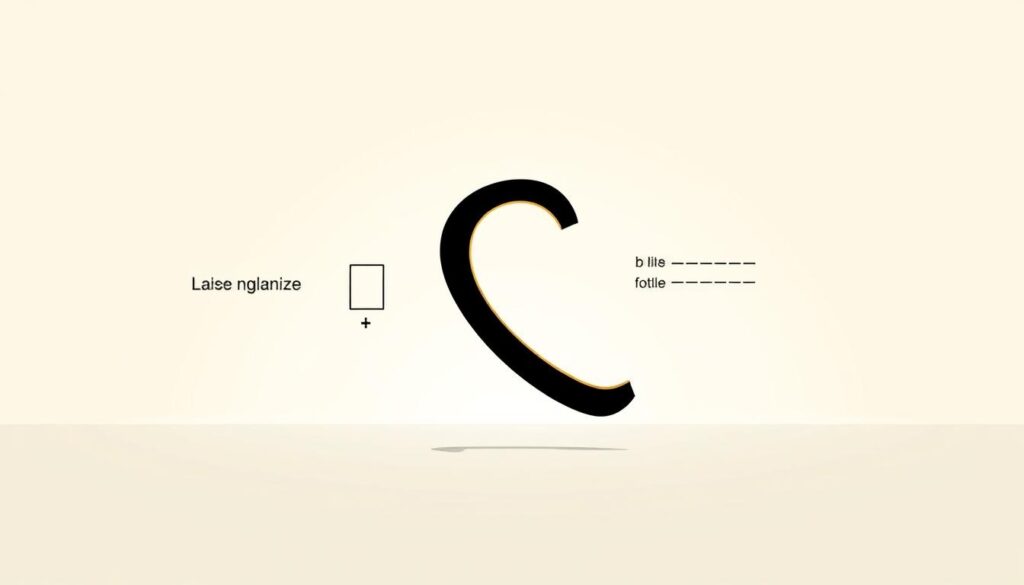Physical Address
304 North Cardinal St.
Dorchester Center, MA 02124
Physical Address
304 North Cardinal St.
Dorchester Center, MA 02124

Many writers find punctuation marks intimidating, but the semicolon doesn’t have to be one of them. This powerful tool sits between commas and periods in strength, creating smooth transitions between ideas. Let’s break down why it matters for clear communication.
Semicolons create bridges between sentences that share a direct relationship. They work best when connecting thoughts that could stand alone but gain meaning from being paired. Imagine linking two sentences about the same topic without repeating words – that’s where this mark shines.
Using them correctly elevates your writing by preventing awkward pauses or run-on sentences. They add sophistication without sounding forced, making your work feel polished. Whether drafting emails or essays, mastering this grammar tool helps you express complex ideas with clarity.
In the toolbox of grammar, semicolons serve as versatile connectors between complete thoughts. They balance separation and connection, acting like a traffic light that pauses without fully stopping the flow of ideas.
A semicolon combines a comma’s linking ability with a period’s dividing power. Its design—a dot over a comma—visually represents its dual role. This mark joins independent clauses that share a thematic bond, creating smoother transitions than separate sentences.
Consider it a middle-ground pause. Unlike commas that rush readers forward or periods that halt momentum, semicolons let ideas breathe while maintaining momentum. They’re perfect for showing relationships between statements without using conjunctions like “and” or “but.”
These punctuation marks excel at organizing complex lists containing internal commas. For example: “Our team visited Paris, France; Rome, Italy; and Berlin, Germany.” Here, semicolons prevent confusion between locations and their countries.
“The semicolon tells you that there is still some question about the preceding full sentence; something needs to be added.” – William Strunk Jr.
In sentence structure, semicolons help writers avoid choppiness or run-on errors. They allow nuanced connections between related ideas, giving readers clarity without sacrificing sophistication. Mastering this tool adds depth to both creative and technical writing.
Have you ever wondered how to smoothly link two complete thoughts without sounding repetitive? Semicolons offer an elegant solution. They act like invisible bridges between ideas that deserve more connection than separate sentences provide but less separation than a period creates.

An independent clause contains both a subject and verb, forming a complete idea. When you have two of these that relate closely, a semicolon joins them better than a comma. For example: “The storm flooded the streets; rescue teams worked through the night.” Both parts could stand alone but gain impact from their partnership.
Test your sentences by replacing the semicolon with a period. If both halves still make sense, you’ve nailed it! This technique prevents choppy writing while maintaining clarity. It’s perfect for showing cause-effect relationships or subtle contrasts.
Words like “and” or “but” often link two independent clauses. However, semicolons create a more polished connection. Compare these:
The second version implies contrast without stating it outright. Remember: never pair semicolons with conjunctions like “and” or “so.” Choose one method based on your desired tone. For detailed grammar guidelines, check trusted resources.
This punctuation mark shines in professional writing by streamlining complex ideas. Whether drafting reports or crafting stories, mastering this rule elevates your communication instantly.
Semicolons bridge thoughts with precision, offering writers a tool for elegant connections. They shine when linking statements introduced by words like however or therefore. For example: “She completed the report; however, revisions were needed.” This creates a clear relationship between actions.

Think of this mark as a flexible pause—stronger than a comma but less abrupt than a period. It helps readers see connections without overexplaining. Consider rhythm: if a sentence needs breathing room without a full stop, try this punctuation.
| Punctuation | Pause Strength | Best For |
|---|---|---|
| Comma | Weak | Brief pauses, lists |
| Semicolon | Medium | Linked ideas |
| Period | Strong | Complete breaks |
In writing, semicolons prevent repetitive structures. Instead of short, choppy sentences, combine related thoughts: “The café opened at dawn; the aroma drew early risers.” This adds flow while keeping ideas distinct.
Avoid overusing them. Reserve semicolons for moments where relationships between sentences need emphasis. If clauses feel loosely connected, a period often works better. Balance creates polished grammar without distracting readers.
Clear writing often hinges on mastering punctuation’s subtle tools. Two scenarios where semicolons prove indispensable involve transitional phrases and complex lists. Let’s explore how this mark solves clarity issues in both contexts.
Imagine listing cities with their countries: “The tour includes Paris, France; Tokyo, Japan; and São Paulo, Brazil.” Here, semicolons act as super commas, preventing confusion between locations and descriptors. They’re essential when list items contain internal commas or lengthy explanations.
Regular commas disappear in messy lists. Compare these:
This technique helps readers parse information quickly. Use it for addresses, multi-part descriptions, or any complex data needing clear separation.
Words like however or therefore bridge two independent clauses when showing contrast or cause. The formula is simple: [Complete sentence]; [conjunctive adverb], [complete sentence]. For example: “The budget passed; nevertheless, revisions are expected.”
Common transitional phrases include:
Notice the semicolon before and comma after the adverb. This structure maintains flow while highlighting relationships between ideas. Avoid using commas alone here—they create run-on sentences instead of polished connections.
Even experienced writers sometimes stumble over punctuation pitfalls. Let’s tackle two frequent mistakes that undermine clarity—and learn simple fixes to strengthen your work.
A comma splice occurs when two complete sentences are glued together with just a comma. For example: “The sun set, we started the campfire.” Both parts work alone but crash together improperly.
| Error Type | Example | Fix |
|---|---|---|
| Comma Splice | “She finished first, she took a break.” | Replace comma with semicolon |
| Run-on Sentence | “The data updated we missed the change.” | Add semicolon or period |
Run-on sentences lack any punctuation between independent clauses. Test your writing by reading aloud—if you gasp for breath mid-sentence, you’ve found one!
Long sentences with multiple clauses often cause trouble. Remember: semicolons only link two independent clauses or organize messy lists. They’re not substitutes for commas in dependent phrases.
Watch for these red flags:
Fix errors by choosing the right tool. Use semicolons for equal ideas, periods for distinct points, and commas with conjunctions. Your readers will thank you for the smoother ride!
Great communication thrives on clarity. Let’s explore how strategic punctuation choices create polished results that engage audiences. Through concrete demonstrations, you’ll see immediate improvements in your work.
Compare these two versions:
| Scenario | Without Semicolon | With Semicolon |
|---|---|---|
| Linked Actions | “I ordered lunch. Life’s too short for calories.” | “I ordered lunch; life’s too short for calories.” |
| Contrasting Ideas | “Martha went to the library. Her sister played soccer.” | “Martha went to the library; her sister played soccer.” |
| Complex List | “Cities: London, England, Paris, France, Perth, Scotland” | “Cities: London, England; Paris, France; Perth, Scotland” |
The right column shows how semicolons create rhythm while clarifying relationships. Notice how thoughts flow naturally instead of feeling abrupt.
Consider this transition: “Reports exaggerated hurricane damage; I still felt relieved we evacuated.” The semicolon connects cause and effect without spoon-feeding the relationship. Readers appreciate this subtlety in professional documents.
In creative contexts, these marks add sophistication. “Night fell gently; stars emerged like scattered diamonds.” The pause between clauses mirrors the scene’s tranquility. Varied sentence structures prevent monotony, keeping audiences engaged.
Remember: every punctuation choice guides how people interpret your ideas. With practice, you’ll spot opportunities to replace clunky conjunctions or repetitive periods. Your work will gain precision that reflects expertise and care.
Punctuation shapes how ideas land; choosing the right mark transforms vague phrases into precise messages. The semicolon acts as a silent collaborator, helping writers balance rhythm and meaning. Its strategic placement creates bridges between thoughts that deserve connection without merging completely.
Mastering this tool boosts clarity in emails, reports, or creative projects. Think of it as a spotlight highlighting relationships between complete ideas. For example: “Rain delayed the game; fans waited patiently under umbrellas.” The pause here emphasizes cause and effect naturally.
Effective writing thrives on variety. Alternate between short statements and linked clauses to maintain reader engagement. Review recent drafts—could replacing periods or commas with semicolons strengthen your message?
Like any skill, practice builds confidence. Start by revising one complex sentence today. Soon, you’ll wield this punctuation mark with the precision of a seasoned wordsmith, turning fragmented thoughts into polished prose.